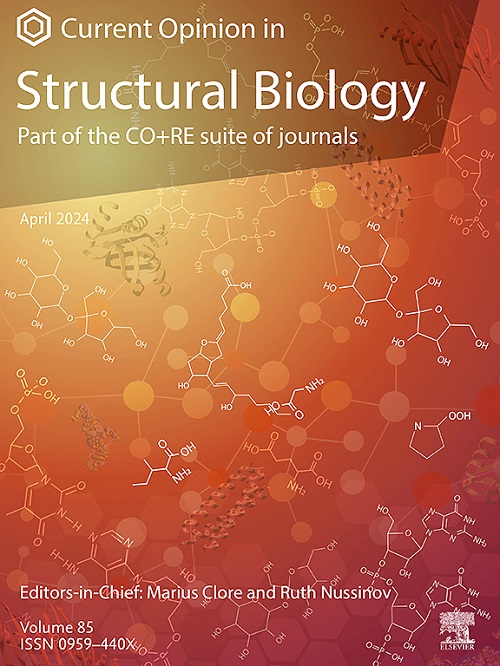蛋白质-配体相互作用的计算模型:从结合位点鉴定到姿态预测及其他
IF 6.1
2区 生物学
Q1 BIOCHEMISTRY & MOLECULAR BIOLOGY
引用次数: 0
摘要
蛋白质配体建模是现代药物发现的基石,促进了调节蛋白质功能的生物活性化合物的鉴定和优化。计算方法为探索不断增长的化学和生物空间,加速早期药物开发提供了具有成本效益和可扩展的策略。基于物理的方法和数据驱动的机器学习技术的进步扩大了用于建模蛋白质-配体相互作用的工具的范围和准确性。本文综述了蛋白质配体建模的关键方法,包括结合位点预测和靶结合配体构象的生成和评估。它还讨论了最先进的机器学习方法,这些方法正在重塑这些任务的执行方式,并提高结合位点、结合姿态和结合亲和力预测的准确性。本文章由计算机程序翻译,如有差异,请以英文原文为准。
Computational modeling of protein–ligand interactions: From binding site identification to pose prediction and beyond
Protein-ligand modeling is a cornerstone of modern drug discovery, facilitating the identification and optimization of bioactive compounds that modulate protein function. Computational approaches provide cost-effective and scalable strategies for exploring the growing chemical and biological spaces, accelerating early-stage drug development. Advances in both physics-based methods and data-driven machine learning techniques have expanded the range and accuracy of tools available for modeling protein-ligand interactions. This review provides a current and concise view of key methodologies in protein-ligand modeling, including binding site prediction and the generation and evaluation of target-bound ligand conformations. It also discusses state-of-the-art machine learning approaches that are reshaping how these tasks are performed and enhancing the accuracy of binding site, binding pose, and binding affinity predictions.
求助全文
通过发布文献求助,成功后即可免费获取论文全文。
去求助
来源期刊

Current opinion in structural biology
生物-生化与分子生物学
CiteScore
12.20
自引率
2.90%
发文量
179
审稿时长
6-12 weeks
期刊介绍:
Current Opinion in Structural Biology (COSB) aims to stimulate scientifically grounded, interdisciplinary, multi-scale debate and exchange of ideas. It contains polished, concise and timely reviews and opinions, with particular emphasis on those articles published in the past two years. In addition to describing recent trends, the authors are encouraged to give their subjective opinion of the topics discussed.
In COSB, we help the reader by providing in a systematic manner:
1. The views of experts on current advances in their field in a clear and readable form.
2. Evaluations of the most interesting papers, annotated by experts, from the great wealth of original publications.
[...]
The subject of Structural Biology is divided into twelve themed sections, each of which is reviewed once a year. Each issue contains two sections, and the amount of space devoted to each section is related to its importance.
-Folding and Binding-
Nucleic acids and their protein complexes-
Macromolecular Machines-
Theory and Simulation-
Sequences and Topology-
New constructs and expression of proteins-
Membranes-
Engineering and Design-
Carbohydrate-protein interactions and glycosylation-
Biophysical and molecular biological methods-
Multi-protein assemblies in signalling-
Catalysis and Regulation
 求助内容:
求助内容: 应助结果提醒方式:
应助结果提醒方式:


